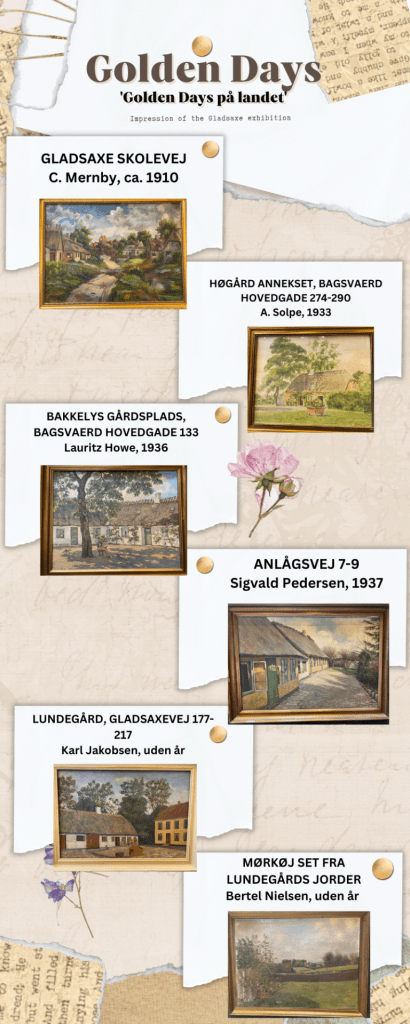
By Larissa Kuiper, Lindokuhle Mlombo and Jack Wilson
In a country where many cling to idealized accounts of the agricultural past, a Danish archivist in Gladsaxe is exhibiting what she considers a more accurate picture of agricultural life in the 20th century.
Sanne Rasmussen’s project is on display at the library in Gladsaxe, a suburb of Copenhagen. The exhibit juxtaposes paintings of idyllic farmhouses and winding roads with descriptions of the hardships of rural life in the once agricultural area. “A tough life,” one of the display boards reads.
“When we think way back in the beginning of the 1900s, we think everything was great,” Rasmussen says. As in many countries, such a recollection is promoted by art and literary works, she says. “Maybe we can learn that it wasn’t necessarily all just fun and games.”
The exhibition is part of a museum festival, called Golden Days, celebrated in museums and local archives across Denmark’s most populous island of Zealand. This year’s theme, “Fra land til by,” from country to city, centres around Denmark’s agrarian history and transition into a largely urbanized country.
Now a suburb where many commute daily to Copenhagen, Gladsaxe was once farmland with its residents living in thatched roof houses. Slowly developing in the 1930s, Gladsaxe saw a postwar building boom in the 1950s and 1960s. That same trend played out elsewhere in the country. In 1960, about 26 per cent of Danes lived in rural communities, compared to just 12 per cent in 2022.
In Gladsaxe, the denser housing that replaced farmhouses is often symbolized by tall apartment buildings iconic to locals. “The image of this development are the tall houses,” Rasmussen says.
Learning the local history
In addition to holding an unrealistically sunny view of rural life, Rasmussen says many in Gladsaxe might not even realize the land they now live on once served to feed cities, rather than house their workers. “When you walk around now in Gladsaxe, you wouldn’t be able to tell that 70 years ago, it was all rural.” A possible exception, Rasmussen adds, are the residents of those iconic houses, who take a certain pride in the history of their homes.
She says she hopes the exhibit will help people “learn about their past and maybe see it in a more realistic way.”
Like other developed nations, Denmark has seen both a reduction of the number of agricultural workers and an industrialization of what remains of the industry. “It’s mind boggling how big these farms are now,” Rasmussen says. “Nowadays, farming is also an industry, so it’s different from what we’re showing here.”
The exhibition is the archivist’s first in her new position, which sees her collect documents and photos in an archive room thick with the vanilla-like smell of aging paper. The municipality’s collection is kept online for residents to consult and is also available to researchers. Once a year, the archive puts on an exhibit like this one. “We try to tell stories,” Rasmussen says.
The project has drawn a lot of interest from the community, the archivist says, especially for images that show the former rural landscape alongside familiar buildings. She stresses the importance of learning about local histories, understanding a place’s story and challenging stereotypical images of the past.
“The past and the future are very much connected,” Rasmussen says. “You can’t see where you’re going if you don’t know where you came from.”
This article is written for Canadians with an interest in history and could be published in https://www.canadashistory.ca/
Link to YouTube video: https://youtu.be/Od0oi-0-b4c
